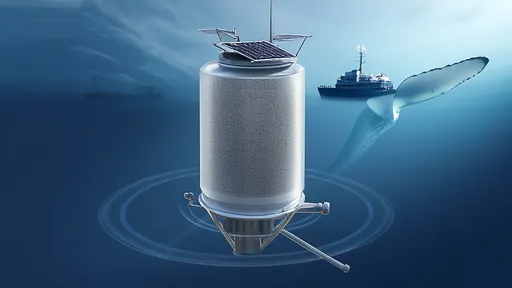The vast expanse of the ocean, once a sanctuary for marine life, has become increasingly noisy due to human activity. Among the most affected are whales, whose survival depends heavily on their acute hearing. Ship strikes and underwater noise pollution have emerged as critical threats to these gentle giants. In response, scientists and engineers have developed an innovative solution known as the "acoustic shield" or "whale shield"—a smart sonar system designed to deter ships from whale habitats and protect these marine mammals from harmful noise.
The Plight of Whales in Noisy Waters
Whales rely on sound for communication, navigation, and hunting. Their sophisticated auditory systems allow them to detect faint echoes over vast distances, but this very sensitivity makes them vulnerable to the cacophony of modern maritime traffic. The constant hum of ship engines, sonar pulses from naval exercises, and industrial underwater drilling create a disruptive soundscape. Prolonged exposure to such noise can lead to hearing damage, disorientation, and even strandings. For endangered species like the North Atlantic right whale, these disturbances pose an existential threat.
Researchers have long sought ways to mitigate this problem. Traditional measures, such as speed restrictions in whale migration corridors, have had limited success. The challenge lies in balancing economic interests with conservation efforts. Shipping lanes are vital for global trade, and rerouting vessels is often impractical. This is where the acoustic shield comes into play—a technological middle ground that alerts ships to nearby whales without significantly disrupting maritime operations.
How the Smart Sonar System Works
The acoustic shield operates on a simple yet effective principle: it detects whale vocalizations and emits targeted sonar signals to guide ships away from their paths. Deployed in strategic locations, such as known migration routes or feeding grounds, the system uses hydrophones to monitor underwater sounds. Advanced algorithms distinguish whale calls from background noise, identifying species based on their unique acoustic signatures. Once a whale is detected, the system sends real-time alerts to nearby vessels, suggesting alternate routes or reduced speeds.
What sets this technology apart is its non-invasive approach. Unlike loud acoustic deterrent devices used in fisheries, which can harm marine life, the shield emits low-frequency pulses that are audible to ships but minimally disruptive to whales. The goal is not to scare whales away but to create an invisible barrier that keeps ships at a safe distance. Early trials have shown promising results, with a noticeable reduction in close encounters between whales and vessels in test areas.
Challenges and Future Prospects
Despite its potential, the acoustic shield faces several hurdles. One major concern is the scalability of the system. Covering vast oceanic regions with sufficient sensor networks requires substantial investment and international cooperation. Additionally, some shipping companies are hesitant to adopt the technology, fearing delays or increased operational costs. Advocates argue, however, that the long-term benefits—preserving marine biodiversity and avoiding costly collisions—far outweigh these challenges.
Looking ahead, researchers are exploring ways to integrate artificial intelligence for more precise whale tracking. Machine learning models could predict whale movements based on historical data, allowing for proactive rerouting of ships. There’s also growing interest in combining the shield with other conservation tools, such as underwater drones that monitor whale health in real time. As the technology matures, it could become a cornerstone of global efforts to protect marine ecosystems.
A Quieter Future for the Ocean
The acoustic shield represents a hopeful step toward reconciling human activity with the needs of marine life. By leveraging cutting-edge technology, we can reduce our acoustic footprint and give whales a fighting chance. The ocean’s silence is not just a poetic ideal—it’s a necessity for the survival of its inhabitants. With continued innovation and collaboration, we might yet restore the underwater symphony to its natural harmony.

By /Jul 22, 2025

By /Jul 22, 2025

By /Jul 22, 2025

By /Jul 22, 2025

By /Jul 22, 2025

By /Jul 22, 2025

By /Jul 22, 2025

By /Jul 22, 2025

By /Jul 22, 2025

By /Jul 22, 2025

By /Jul 22, 2025

By /Jul 22, 2025

By /Jul 22, 2025

By /Jul 22, 2025

By /Jul 22, 2025

By /Jul 22, 2025

By /Jul 22, 2025

By /Jul 22, 2025